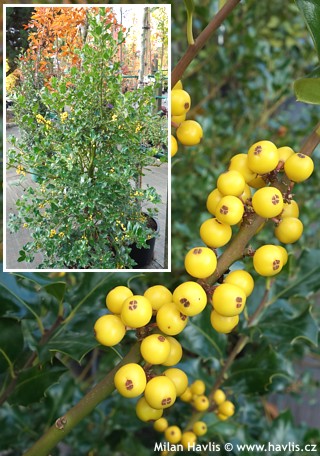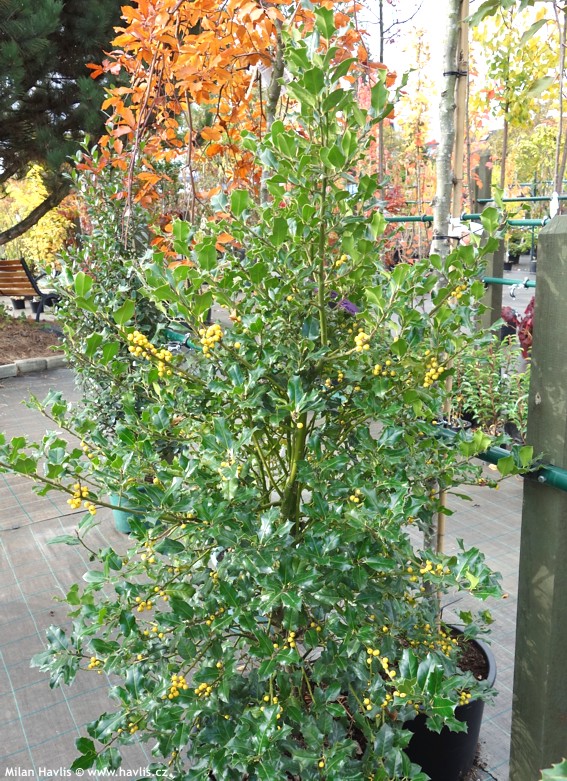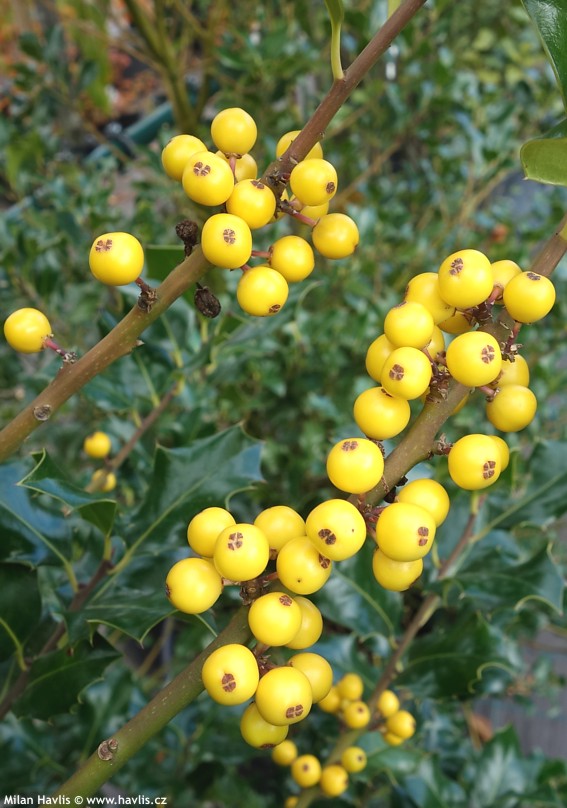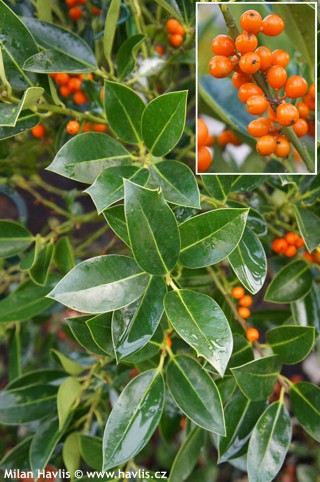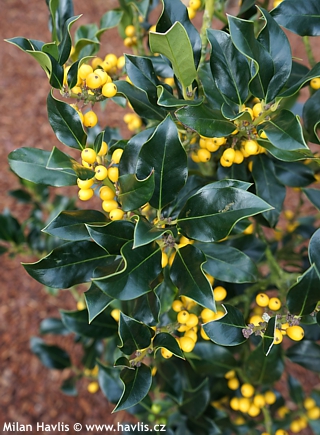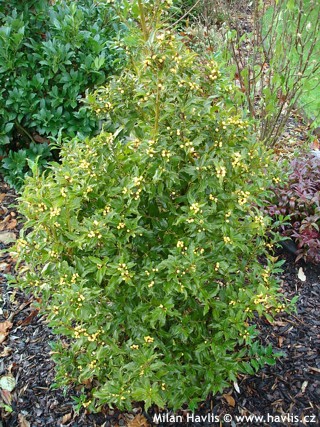Ilex aquifolium 'BACCIFLAVA' English holly - female
size/type
taller shrub,taller shrub
usual height
3-4m
usual width
2-3m
leaves
evergreen broadleaf
colour of leaves
flowers
insignificant or non-blooming
location
full to partial sun
soil type
acidic (peaty)
soil moisture requirements
evenly moist (dislikes drought)
USDA zone (lowest)
5b (down to -27°C)
winter protection
for zone 5+6

for zone 7

categorized
Description of the plant:
Bacciflava, formerly called fructu luteo, is a female holly producing attractive rich yellow fruit in autumn and winter. The berries are quite firm for a long time, and will only soften after a significant thaw usually in mid winter, and only then the birds will feast on them. By then you can enjoy the profusion of beautiful berries as they decorate the plant with its cheerful colour on cold and grey days of winter. Beware that Bacciflava is a female variety which needs a male plant nearby for pollination of its flowers.Evergreen leaves are very dark green and highly glossy. Young plants have slightly undulated foliage with small spines, but as they reach a height of about 1.7m they do not have to worry about animals eating them off and start producing flatter leaves without protection (spines). They make majority of entire leaves with just one central sharp tip. Annual growth is about 15-20 cm which makes it a rather slow or at most moderate grower. Natural shape is pyramidal, quite symmetrical, with large bottom part and slender top. With age it gets more even as far as its spread in low, middle, and central parts, and old plants exhibit an almost columnar habit. Garden grown plants reach about 4m tall, whereas those growing in the wild, and in parks and arboretums with plenty of root space can get twice as big.
Hollies are often pruned. It is common to cut some branches in December as a Christmas decoration, and in order to achieve denser or smaller plants they can be pruned in early spring after all frosts. Early summer trimming is also possible, it will help the plants maintain its neat shape.
Grow hollies in moist but well-drained, fertile soil. They can take periods of drought once established but dislike compacted, heavy-clay-based soils that turn very dry in summer, and often too wet in winter. If your soil is such, dig the planting hole only half the depth of the root ball, refine what you dig out and mix well with quality substrate of highly acidic level (low pH value). Using this mixture make a gradual slope from the stem to the original ground level and tamp it down as much as you can. Your root ball should not look like a molehill but more like a wide and flat mound. Mulch it well and keep watering it more often as it will be more prone to drying out as opposed to most common flat-in-the-ground transplanting.
Hollies do best in full sun but can also grow in shade where they will loose their compact habit. This variety proved very hardy even in full sun in winter. However, if you live in a region with cold winters and long-lasting frost we recommend growing it in position sheltered from drying winds, and preferably shaded from winter sun. Before and during winter when the soil is not frozen provide good watering. Hardy to about -27°C (USDA zone 5b).
Last update 08-12-2016
QUICK PRICE OVERVIEW
CURRENTLY SOLD OUT
WANT TO TRY A SIMILAR PLANT?












